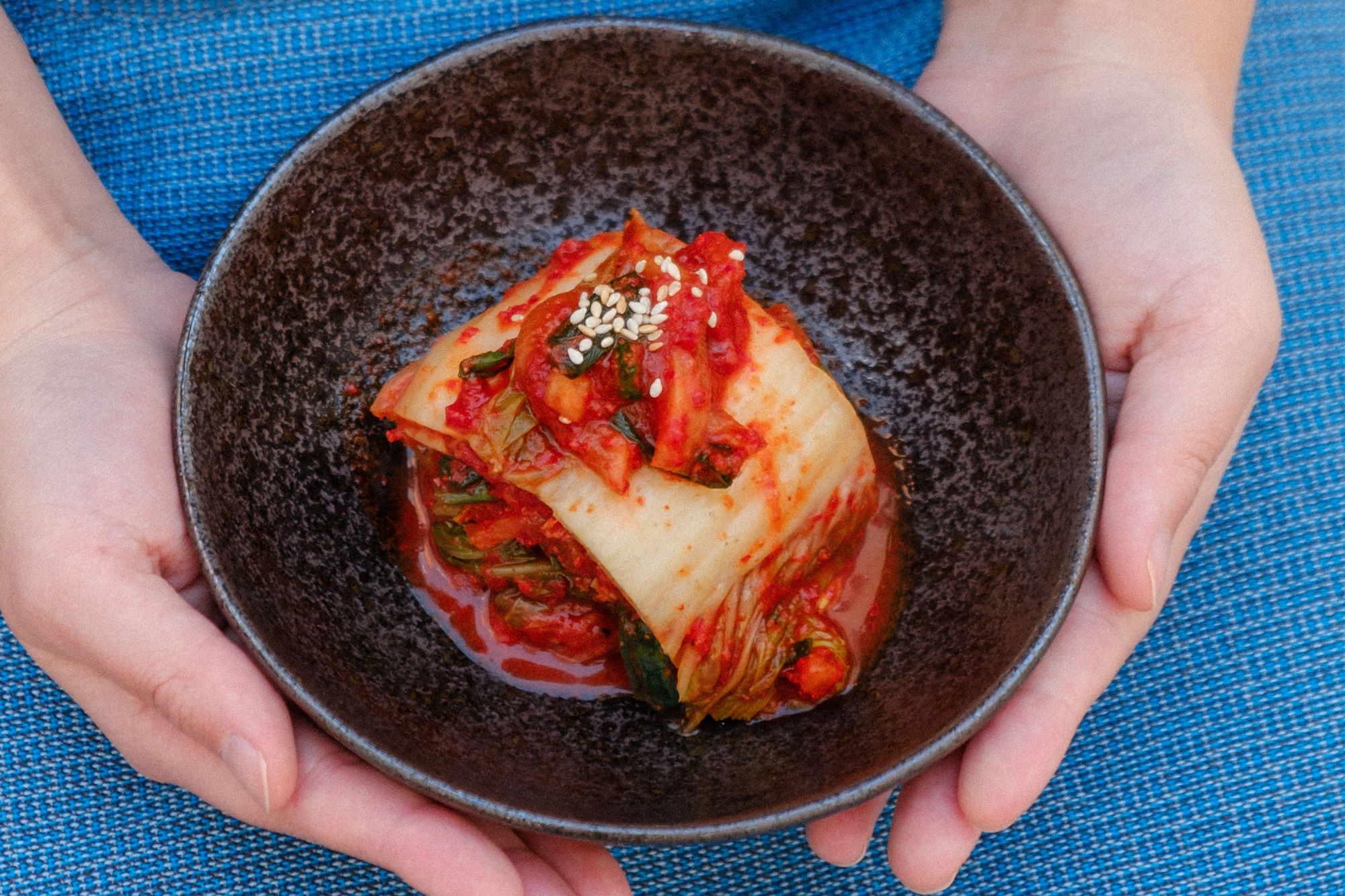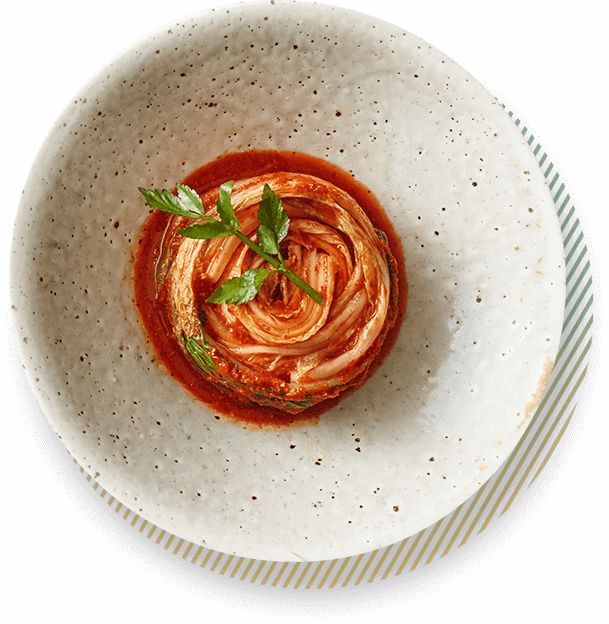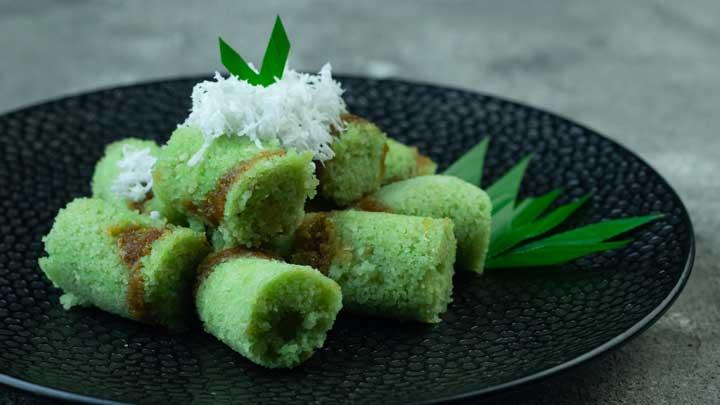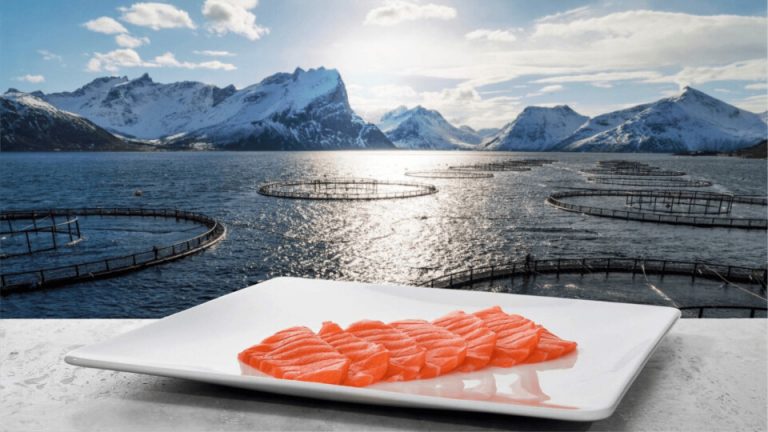Kimchi (김치) is Korea’s most iconic and essential dish, enjoyed in nearly every meal across the country. This fermented vegetable dish, typically made with napa cabbage, radish, garlic, ginger, and red chili flakes, is not only packed with flavor but also loaded with health benefits.
From its gut-friendly probiotics to its rich antioxidants and vitamins, kimchi is a superfood with centuries of history, celebrated for its bold, spicy, and umami-rich taste.
In this guide, we will explore:
- The history and cultural significance of kimchi.
- The health benefits of eating kimchi regularly.
- How kimchi fermentation works.
- Step-by-step recipe for making authentic kimchi at home.
- Best ways to enjoy kimchi in everyday meals.
The History and Cultural Significance of Kimchi

Origins in Ancient Korea (Over 3,000 Years Ago)
- The earliest form of kimchi dates back to as early as 37 BCE, when Koreans began fermenting vegetables to preserve food for long winters.
- Originally, kimchi was not spicy—it was made with salted and fermented vegetables.
The Introduction of Chili Peppers (16th Century)
- Chili peppers were introduced to Korea culinary in the 1500s via Portuguese traders, revolutionizing kimchi into the spicy, vibrant dish we know today.
Kimchi in Modern Korean Cuisine
- Today, kimchi is a national symbol of Korean identity, appearing in nearly every meal, from side dishes (banchan) to stews (kimchi jjigae) and fried rice (kimchi bokkeum-bap).
📌 Fun Fact: Koreans consume over 2 million tons of kimchi annually! 🥬🔥
The Health Benefits of Eating Kimchi 🥗💪
Kimchi is not just delicious—it’s one of the healthiest fermented foods in the world.
1. Supports Gut Health & Digestion 🦠
- Rich in probiotics (Lactobacillus bacteria) from fermentation, promoting a healthy gut microbiome.
- Helps with digestion, bloating, and nutrient absorption.
📌 Pro Tip: Kimchi can be especially beneficial for people with IBS (Irritable Bowel Syndrome) or weak digestion.
2. Boosts Immunity 🛡️
- Contains high levels of vitamin C and antioxidants that help fight infections and reduce inflammation.
- The probiotics in kimchi support immune function by strengthening gut health.
📌 Scientific Fact: Studies show that regular consumption of fermented foods lowers inflammation and enhances immune response.
3. Aids in Weight Loss & Metabolism 🔥
- Low in calories and fat, but high in fiber, keeping you full for longer.
- The capsaicin from red chili flakes can help boost metabolism and fat burning.
📌 Pro Tip: Eating kimchi before meals can naturally reduce appetite and improve digestion.
4. Supports Heart Health ❤️
- Helps lower cholesterol levels and reduce blood pressure.
- Fermented foods like kimchi improve blood circulation and heart function.
📌 Bonus: Some studies suggest kimchi may help prevent heart disease and stabilize blood sugar levels.
5. Anti-Aging & Skin Health Benefits 🌟
- Kimchi is packed with antioxidants, which help reduce wrinkles, fine lines, and skin damage.
- The fermentation process enhances vitamin absorption, improving skin hydration and elasticity.
📌 Fun Fact: Many Koreans credit kimchi as one of the secrets to youthful-looking skin!
How Kimchi Fermentation Works 🔬🥒
Kimchi’s unique flavor and health benefits come from its fermentation process:
- Stage 1: Salting & Brining – Salt draws out moisture from the cabbage, creating an environment where beneficial bacteria can grow.
- Stage 2: Lactic Acid Fermentation – Natural lactic acid bacteria (LAB) begin converting sugars into probiotics, making the kimchi tangy and gut-friendly
- Stage 3: Maturation & Flavor Development – Over time, the kimchi develops complex umami flavors.
📌 Fermentation Time:
- 1–2 days (Mild & Fresh)
- 1–2 weeks (Balanced Flavor)
- 1 month+ (Deep, Sour, and Intense)
Step-by-Step Recipe: Authentic Korean Kimchi
Ingredients (Makes 2 Jars)
For the Cabbage:
- 1 large napa cabbage
- ¼ cup sea salt
- 4 cups water
For the Kimchi Paste:
- 1 small apple or pear (blended for natural sweetness)
- 4 cloves garlic, minced
- 1-inch ginger, grated
- 2 tbsp Korean red chili flakes (Gochugaru)
- 2 tbsp fish sauce (or soy sauce for vegan version)
- 1 tbsp sugar
- ½ cup daikon radish, julienned
- 2 green onions, chopped
Step 1: Salt the Cabbage
- Cut napa cabbage into quarters or bite-sized pieces.
- Mix salt with water and soak cabbage for 2 hours, flipping every 30 minutes.
- Rinse cabbage thoroughly and drain.
📌 Why Salt? This step removes bitterness and softens the cabbage.
Step 2: Make the Kimchi Paste
- Blend apple or pear into a smooth puree.
- In a bowl, mix blended fruit, garlic, ginger, chili flakes, fish sauce, and sugar.
- Stir in julienned daikon radish and green onions.
📌 Pro Tip: Adjust chili flakes for mild or extra spicy kimchi.
Step 3: Massage & Pack the Kimchi
✔ Rub the kimchi paste into each cabbage layer, massaging well.
✔ Pack tightly into a sterilized glass jar, pressing down to remove air bubbles.
📌 Fermentation Tip: Leave 1-inch space at the top to allow expansion.
Step 4: Ferment & Store
✔ Room Temperature (1-2 days) – Leave kimchi at room temp to start fermentation.
✔ Refrigerate (After 2 Days) – Slows down fermentation and deepens the flavor.
📌 Taste Test: Kimchi is ready when it develops a tangy, slightly sour flavor.
Best Ways to Eat Kimchi 🥢
- As a Side Dish (Banchan) – The classic way to enjoy kimchi!
- Kimchi Jjigae (Kimchi Stew) – Spicy, comforting, and packed with umami.
- Kimchi Fried Rice (Kimchi Bokkeumbap) – A quick and flavorful meal.
- Kimchi Pancakes (Kimchi Jeon) – Crispy, savory, and delicious.
- Kimchi Ramen – Instant ramen + kimchi = the ultimate comfort food.
📌 Pro Tip: Aged kimchi is perfect for cooking, as it adds deeper, more intense flavors.
Conclusion: The Ultimate Superfood of Korea
Kimchi is not just a dish—it’s a way of life in Korea, offering bold flavors, deep nutrition, and incredible health benefits. Whether eaten fresh or fermented, it remains a beloved staple in Korean cuisine and global gastronomy.
💬 What’s your favorite way to enjoy depobos kimchi? Have you ever tried making it at home? Share your thoughts below! 🇰🇷🔥🥬




















